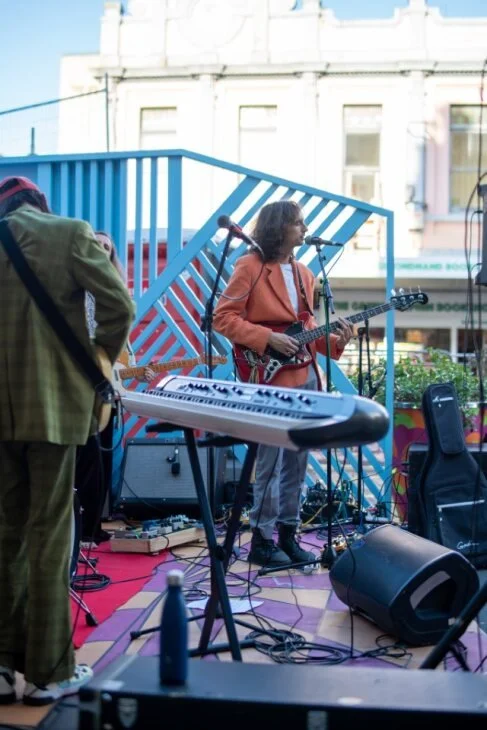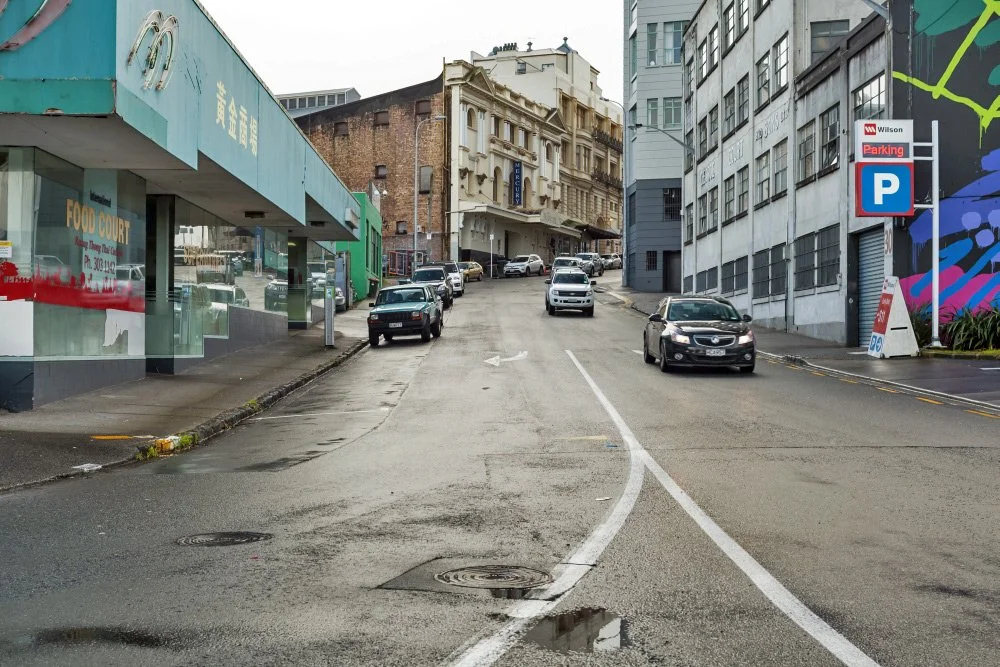Rail is coming uptown with the new CRL Karanga-a-Hape station with two entrances.
When CRL opens, the Karangahape Road area will have a new architecturally-designed station, making it easier and quicker for more people to travel to and from the K Road area.
This new station, with entrances on Mercury Lane (next to the Mercury Theatre) and Beresford Square, will be the deepest on the CRL network at 33 metres underground.
The station will be great for the area. The redevelopment will unlock additional high-density residential capacity and generate urban renewal within the inner-city fringe catchment. This will provide housing stock to help reduce Auckland's housing shortage over time.
The station design
The four design elements
Four separate station design elements combine to tell the story.
Earth Element – representing Papatūānuku. At Te Waihorotiu and Karanga-a-Hape Stations the earth element is represented by precast panels, the colour and texture of which mirrors Waitematā sandstone. At Maungawhau/Mount Eden Station the earth element is represented by basalt panels, in reference to the basalt of the local area.
Sky Element – representing Ranginui and is depicted by the upper facade treatment. It is a hard working permeable, breathable, skin which responds to the functional and technical requirements of the station. The orientation of the sky element shingles, allows for air intake and exhaust for the louvres sitting behind. The sky elements at Te Waihorotiu and Maungawhau/Mount Eden Stations are different interpretations of ‘the tears of Ranginui’. The Mercury Lane sky element is an expression of Te Ika-whenua-o-te-rangi, the Milky Way constellation.
Threshold Elements – these are unique to each station and represents an aspect and narrative relating to each station’s Māori deity (atua), or god. The threshold is the physical point between the outside streetscape, and inside the station. We’ll share more about this aspect of station design in upcoming newsletters.
Fourth Element – represents Te Whaiao (the daylight or glimmer of dawn). It is a transitional element, providing layering, solidity and reflectivity to connect the earth element with the sky. A physical reminder of the act of Tāne Mahuta pushing apart his parents, Ranginui and Papatūānuku.
The gifted name Karanga-a-Hape
Ko te pae tawhiti whāia kia tata, ko te pae tata whakamaua kia tina (Pursue the distant horizon while cherishing the knowledge and learning you attain along the way)
The name ‘Karanga-a-Hape’ is a grammatical correction of the current Karangahape.
Named for the great calling of Hape, who was left behind by his people when he was denied passage across the ocean in his waka (canoe). After performing a karakia he was gifted a kaitiaki (guardian) - a stingray - and together they crossed the water to arrive in Aotearoa ahead of the Tainui waka that left before them. The name Karanga-a-Hape, celebrates Hape’s call to welcome his own relatives who had denied him passage.
While all four CRL stations are designed around the creation story with Ranginui (the sky father) and Papatūānuku (the earth mother), Karanga-a-Hape Station’s design also references their son, Tāne Mahuta, God of the forest, who pushed his parents apart to create light (day). Allusions to the kauri tree are shown through the large pupurangi shells on the entrance ceiling (these snails live on the tree's leaves).
New Zealand Geographic Board Ngā Pou Taunaha o Aotearoa names railway stations and invited the public to make a submission on proposals for the names of the City Rail Link stations. These proposals were open for public submissions until 9 November 2022. The decision was announced on 16 March 2023. Read their decision














